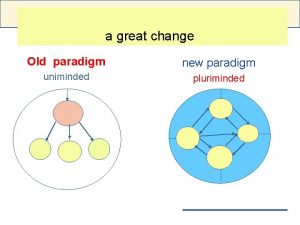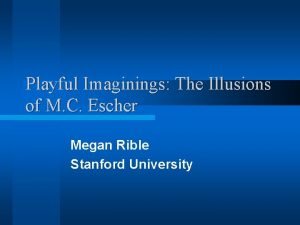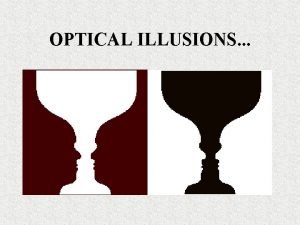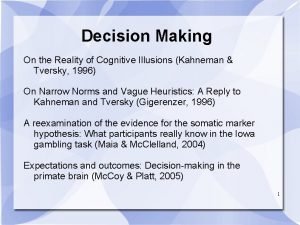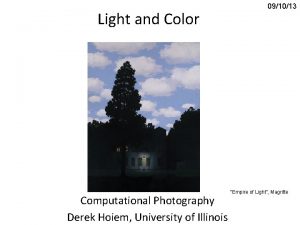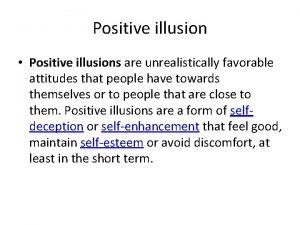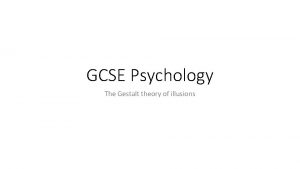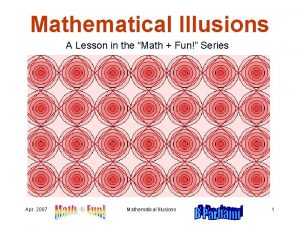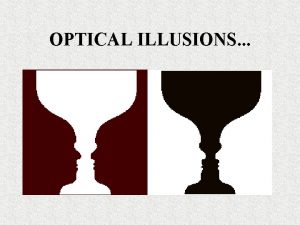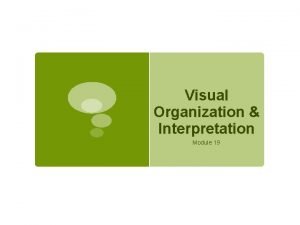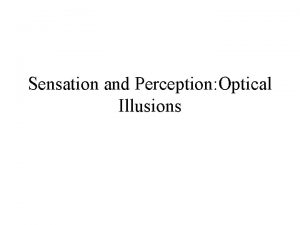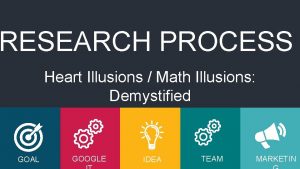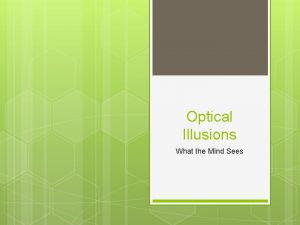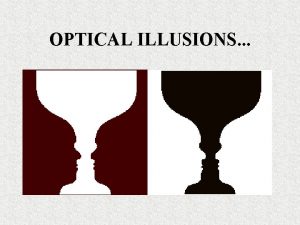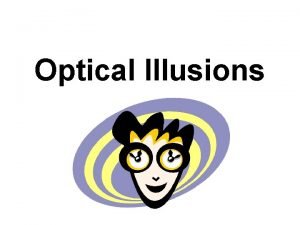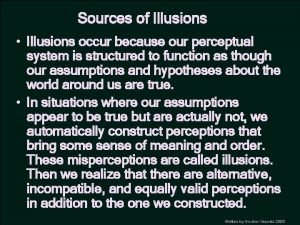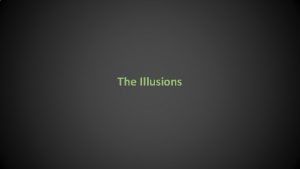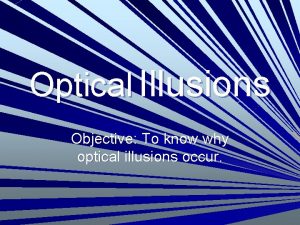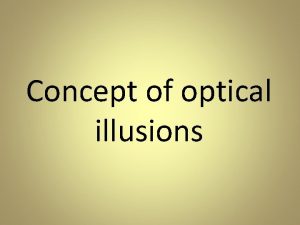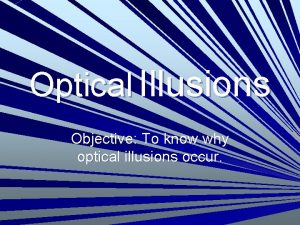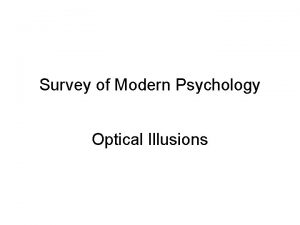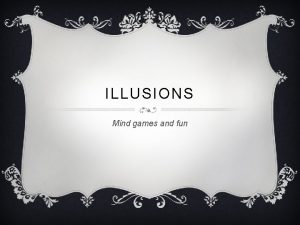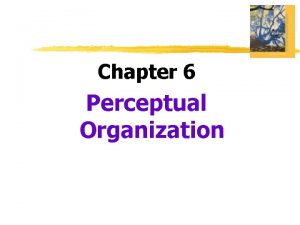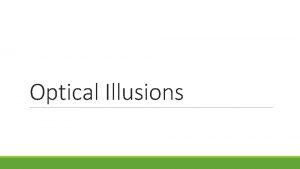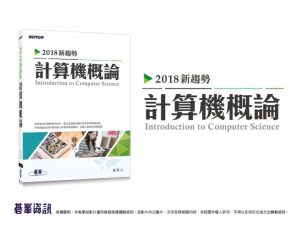Experimental goal Experimental Paradigm Results Illusions of nonrigidity
















- Slides: 16

Experimental goal

Experimental Paradigm

Results

Illusions of non-rigidity

Results (contd. ) 10% X-Y positional noise added 3 x 10% 2 x 20% 1 x 20% Training set 30% 100% 30% 75% 40% 50% 40% 25% 50% 0% 50% Training set Percentage of trials over which subjects reported non-rigidity Learning is object-specific. . . Scale factor

Inferences 1. Arbitrary associations between 2 D and 3 D structures can be learned. 2. Learning is object-specific. 3. Learning influences perception of kinetic depth and stereoscopic depth. 4. Recognition may, in some circumstances, precede 3 D shape perception. Recognition 3 D Shape Image

A model for incorporating high-level learning in early perception (Jones, Sinha, Poggio, Vetter, Current Biology, 1997)

The model schematically Learned knowledge about object-class n Learned knowledge about object-class 1 Image 1+attribute Image 2+attribute … Imagen+attribute Attribute estimation via prototype combination Result Recognition (somehow…) Image

Combining learned instances Object class Image 0 + Attribute 0 Image 1 + Attribute 1 Imagen + Attributen image_new + ? Step 1: image_new = Step 2: + C 0 * Image 0 C 1 * Image 1 + Cn * Imagen C 0 * Attribute 0 + C 1 * Attribute 1 + Cn * Attributen = Attribute_new

The model in action: Example 1 - implicit 3 D shape recovery Image 45 degree face image Attribute Frontal face image

The model in action: Example 1 - implicit 3 D shape recovery Image 45 degree face image Attribute Frontal face image

The model in action: Example 1 - implicit 3 D shape recovery Image 45 degree face image Attribute Frontal face image

The model in action: Example 2 - Clean edge-map extraction Image frontal face image Attribute Clean edge-map Input

The model in action: Example 2 - Clean edge-map extraction Image frontal face image Attribute Clean edge-map Input Model output

The model in action: Example 2 - Clean edge-map extraction Image frontal face image Attribute Clean edge-map Input Model output Bottom-up output

Example 2 (contd. ) Strengths of high-level learning based model: 1. Ability to complete missing information 2. Ability to handle noise
 Old paradigm meaning
Old paradigm meaning Labfinder/paradigm results
Labfinder/paradigm results Experimental vs non experimental research
Experimental vs non experimental research Non experimental design vs experimental
Non experimental design vs experimental Experimental vs non experimental
Experimental vs non experimental Experimental vs non experimental
Experimental vs non experimental Research approaches and designs
Research approaches and designs Mc escher illusions
Mc escher illusions Optical illsuions
Optical illsuions Cognitive illusions in decision making
Cognitive illusions in decision making Echalk optical illusions
Echalk optical illusions What is positive illusion
What is positive illusion Strengths and weaknesses of gestalt psychology
Strengths and weaknesses of gestalt psychology Mathematical illusions
Mathematical illusions Hardest optical illusions
Hardest optical illusions Ambiguous images
Ambiguous images Visual organization psychology
Visual organization psychology
